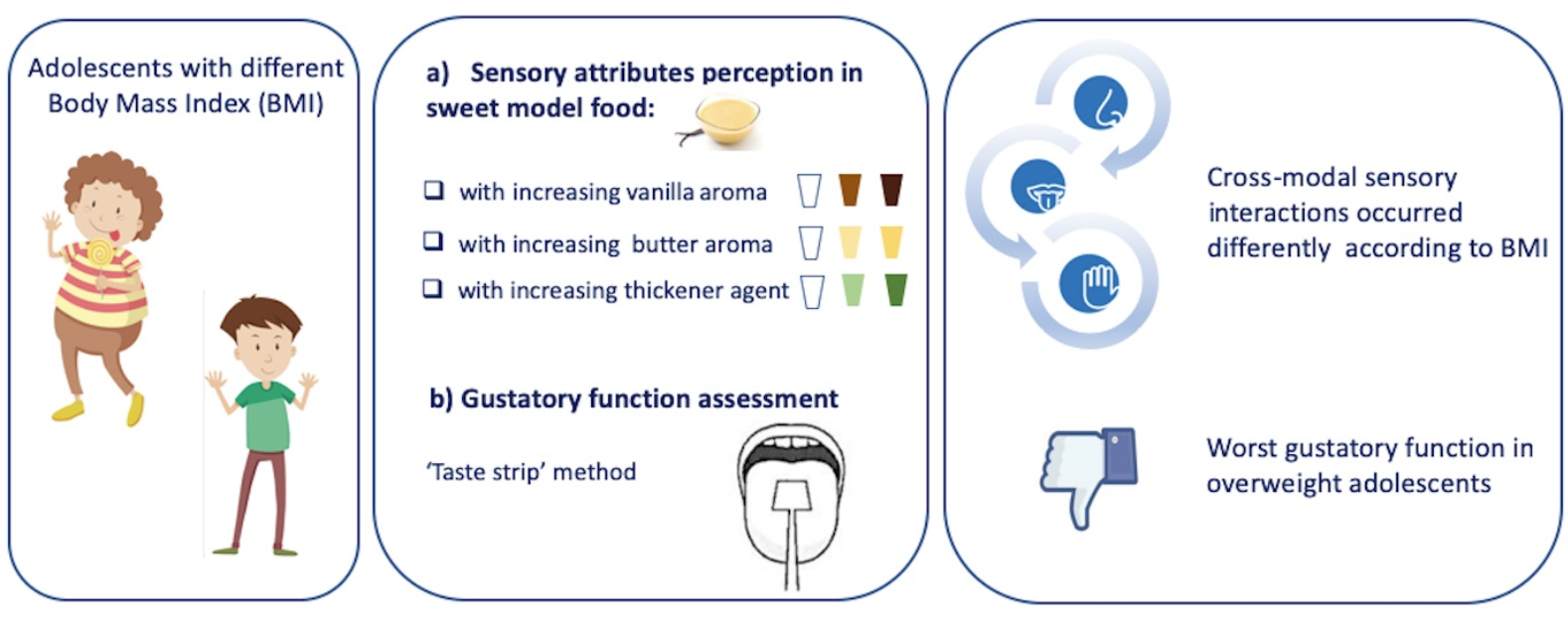Proserpio, C., Verduci, E., Zuccotti, G., Pagliarini, E. Odor–Taste–Texture Interactions as a Promising Strategy to Tackle Adolescent Overweight. Nutrients 2021, 13, 3653.
https://doi.org/10.3390/nu13103653
The adolescence period is characterized by a considerable risk to weight gain due to the high consumption of food rich in sugar. A promising strategy to reduce sugar consumption may lie in exploiting the ability of our senses to interact to each other (cross-modal interactions).
The aims were to investigate the cross-modal interactions and gustatory function in normal-weight and overweight adolescents. Fifty adolescents (25 overweight and 25 normal-weight) were involved. Subjects rated liking and attribute intensity in pudding samples obtained by adding vanilla aroma (0.1%; 0.3%), butter aroma (0.05%; 0.1%) or a thickener agent (1%; 1.5%) to a base formulation. The gustatory function was also measured through the “taste strips” methodology.
Overweight adolescents were found to have a significantly (p < 0.001) worse ability to correctly identify all tastes. Cross-modal interactions occurred differently according to their body mass index, with a significant increase (p < 0.05) in sensory desirable characteristics (e.g., sweet and creaminess) due to aroma addition, especially in overweight subjects. Furthermore, butter aroma significantly increased hedonic responses only in overweight subjects.
Tricking our senses in the way of perceiving sensory attributes could be a promising strategy to develop innovative food formulations with a reduced sugar amount, which will lead to a potential decrease in caloric intake and help to tackle the obesity epidemic.
